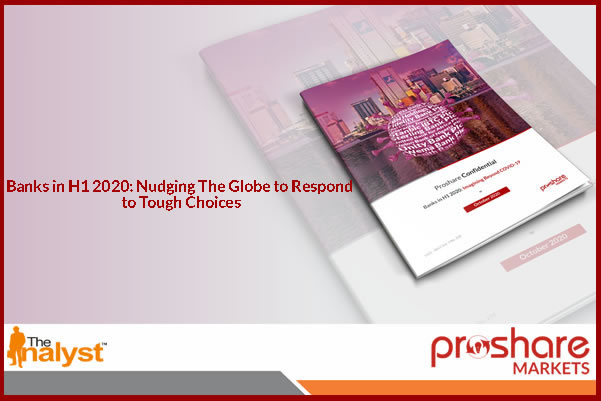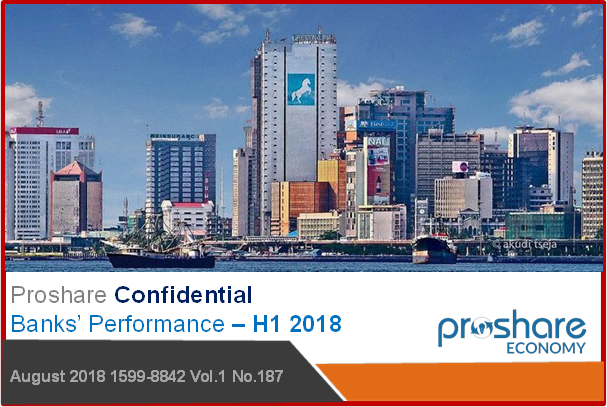Tier 1 Banks: The Tale of the Tape – Who is in out and who is out?
The PSBI Methodology
The classification of Banks into tiers has taken several dimensions over the years. In times past, analysts focused on certain Statement of Position items such as Assets, Loans and Advances, and Deposits size, others considered Statement of Profit or loss items such as Gross Earnings and Net Interest Income. However, the problem with absolute figures is that they tend to downplay efficiency and may overcompensate for size. Take assets, for example, the size of a bank’s assets may on the face of it appear to be a good basis for ranking it over and above a smaller bank, but this completely loses sight of the quality of the assets in question. The same applies to Gross Earnings, which in and of itself does not differentiate between Interest and Non-Interest Income. Meanwhile, if the measurement were share capital, all the banks listed on the Nigerian Exchange Limited (NGX) have their share capital below the N25bn statutory minimum prescribed by the CBN. None would qualify as a tier 1 bank
As an alternative to limited absolute figures, there are a plethora of financial ratios that can be employed in assessing different aspects of the health of banks at once. However, the inherent problem of ratios is that given their sheer number and variety banks tend to highlight favorable ratios and downplay other not so favorable ratios. The selection problem leaves room for cherry-picking where certain ratios are favorable, and several others are not.
The first known attempt at ranking Nigerian Banks into Tiers was made by analysts at Afrinvest, Lagos-based research, and financial advisory firm, in its 2013 Banking Sector Report. In that report, Nigerian banks were classified into two categories namely: tier-1 and tier-2. The report stipulated conditions similar to some CBN prudential guidelines such as a minimum CAR of 15%, NPL cap of 5%, and Liquidity ratio of 30%. In addition, the Afrinvest Tier-based classification required banks to have N1tr worth of Assets. Commercial banks had to meet up with all the requirements to be regarded as first-tier banks, while those banks that fail to meet up to the requirement are classified as second-tier banks. Since then, Tier 1 banks have been captured with the moniker ‘FUGAZE’, a collective acronym for FBNH, UBA, GTCO, Access Bank, Zenith Bank, and ETI.
This marked a notable improvement on the methodology adopted in previous unstructured classifications. By focusing more on specific banking ratios, this method provided an efficiency-based assessment. It however failed to provide compelling arguments as justification for the choice of selected variables as well as the threshold it sets for qualifying banks. In 2020, Afrinvest decided to introduce a new set of parameters and ranking (which never gained as much acclaim as the first). This time the share of business Assets domiciled in Nigeria (at least N5tr), 3-year average CAR (16%), and a minimum deposit Size of N2.5tr.
This approach is not only arbitrary but also overlooks important quantitative and qualitative factors such as governance factors which have real implications for the long-term profitability-the focus of investors, who happen to be the major beneficiaries of the Tier1&2 classifications.
Overall, the arbitrariness of existing classifications makes it imperative to come up with a more reliable basis for classifying banks into tiers. Therefore, Proshare Analysts classifies banks based on their percentile score on the Proshare Strength Bank Index. Banks with scores in the 50th Percentile are regarded as Tier 1 banks, while the rest are considered Tier 11 banks. In its simplest form, the PBSI sums up measures of Asset Quality, Profitability, and Liquidity. The banks with scores in the 50th percentile ranked as tier 1 (see illustration 21 below).
Illustration 21: Assumptions of the Proshare Bank Strength Index (PBSI)
Ranking Tier One Banks in the PSBI model
Analysis
The Proshare Bank Strength Index (PBSI) considers various bank performance ratios but attaches weights to each performance ratio and aggregates them into a single score. The choice of performance ratios and the weights assigned to them is based on the outcome of econometric analysis. To eliminate arbitrariness in the ratio selection process, Proshare sought to identify the most significant determinants of long-term profitability by modeling the Return on Equity (ROE) of quoted Nigerian Banks using the Pooled Ordinary Least Square (POLS) Technique, thereafter, estimating the degree of impact of each of the major performance ratios on ROE as illustrated below:
Model: ROEit = α + φCARt + ρNPLt + χLIQt +θBDVt + εit
To do this, panel data covering multiple cross-sectional units over multiple periods was collected and analyzed. The results obtained showed that Capital Adequacy Ratio (CAR) is the single most important factor that determines the long-term profitability of Banks. Non-Performing Loans (NPL) came in second, Liquidity Ratio (LIQ) is third while Board diversity (BDV) is the fourth most decisive in determining ROE (see table 29 below).
Table 29: Regression Output
Notably, variables such as Asset size and Gross earnings returned statistically insignificant coefficients
Results
Ranking Nigerian Banks: Proshare Bank Strength Index (PBSI)
Based on the FY 2021 results of the banks, Proshare’s BSI ranks Access Bank at the top of the Nigerian Banking stack, having recorded a Capital Adequacy Ratio (CAR) of 24.5% an NPL of 4%, a Liquidity ratio of 51%, and a Board gender mix of 38.2%. Access scored 41.39%, while UBA came in second place with a score of 39.34%. A closer look at UBA’s figures shows that the lender recorded a slightly higher CAR (24.9%) than GTB which clinched the top spot. Likewise, UBA had a better NPL ratio (3.6%) but lower liquidity and Board diversity ratios limited the bank to second place. Stanbic IBTC makes an entry into the list of first-tier banks with a score of 36.86% which is in the 80th percentile.
Zenith Bank which scored 36.14%, came in the 72nd percentile while GTB scored 33.60% to come in at the 63rd percentile. Fidelity Bank takes the sixth position with a PBSI score of 31.3% thereby coming in at the 54th percentile. Importantly, of all the banks eventually categorized as the first tier, GTB alone exceeded the recommended 5% NPL threshold. All banks that qualified as Tier 1 banks met the 15% CAR requirement and the 30% Liquidity ratio conditions (see table 30 below).
Table 30: 2021 Ranking of Banks Based on the Weighted Proshare Bank Strength Index (PBSI)
The 2021 PBSI scores for ETI, WEMA, UBN, FCMB, Sterling, and FBNH were below the 50th percentile and were classified accordingly as second-tier banks. Of this group, ETI, UBN, and Sterling Banks did not manage to meet the 15% CAR threshold. All banks in this tier however recorded NPLs lower than the 5% threshold except for ETI. FBNH and ETI are based on the current classification.
Envisaging a situation where a single year result may see a bank qualify as a first-tier in one year and fail to do so in the following year, we smoothen the performance ratios by using 3-year averages against a single year figure.
Using the three-year average of the banks’ performance indicators, the same six banks remain first-tier banks except that Stanbic IBTC now ranks as the first with a PBSI score of 38.66% while Access, UBA, GTB, Zenith, and Fidelity Banks make up the list of first-tier banks in the same order. Taking a three-year average of FBNH’s critical performance ratios helped the bank to inch up by one spot pushing Sterling bank to the bottom of the rack (see table 31 below).
Table 31: Weighted Proshare Bank Strength Index (PBSI) Using 3-year Average of Performance Ratios
In summary, the PBSI ranks Nigerian banks based on their aggregate points from CAR, NPL, LR, and Board’s Gender Mix (a proxy of Governance. These performance ratios were selected after querying half a dozen other variables namely: Assets Size (Ass), Gross Earnings (GRE), Net Interest Margin (NIM), Cost to Income Ratio (CIR), Digital Earnings, Loans to Deposit Ratio (LDR) Cost of Risk (CoR) and Ratio of Non-executive-to total directors.
Downloadable Versions of Tier 1 Banks Report (PDF)
1. Executive Summary: Nigeria’s Banking Industry: The Case for Redefining Tier 1 Banks - May 28, 2022
2. Full Report: Nigeria’s Banking Industry: The Case for Redefining Tier 1 Banks - May 28, 2022
 Lagos, NG • GMT +1
Lagos, NG • GMT +1











 1121 views
1121 views


































 Sponsored Ad
Sponsored Ad
 Advertise with Us
Advertise with Us









